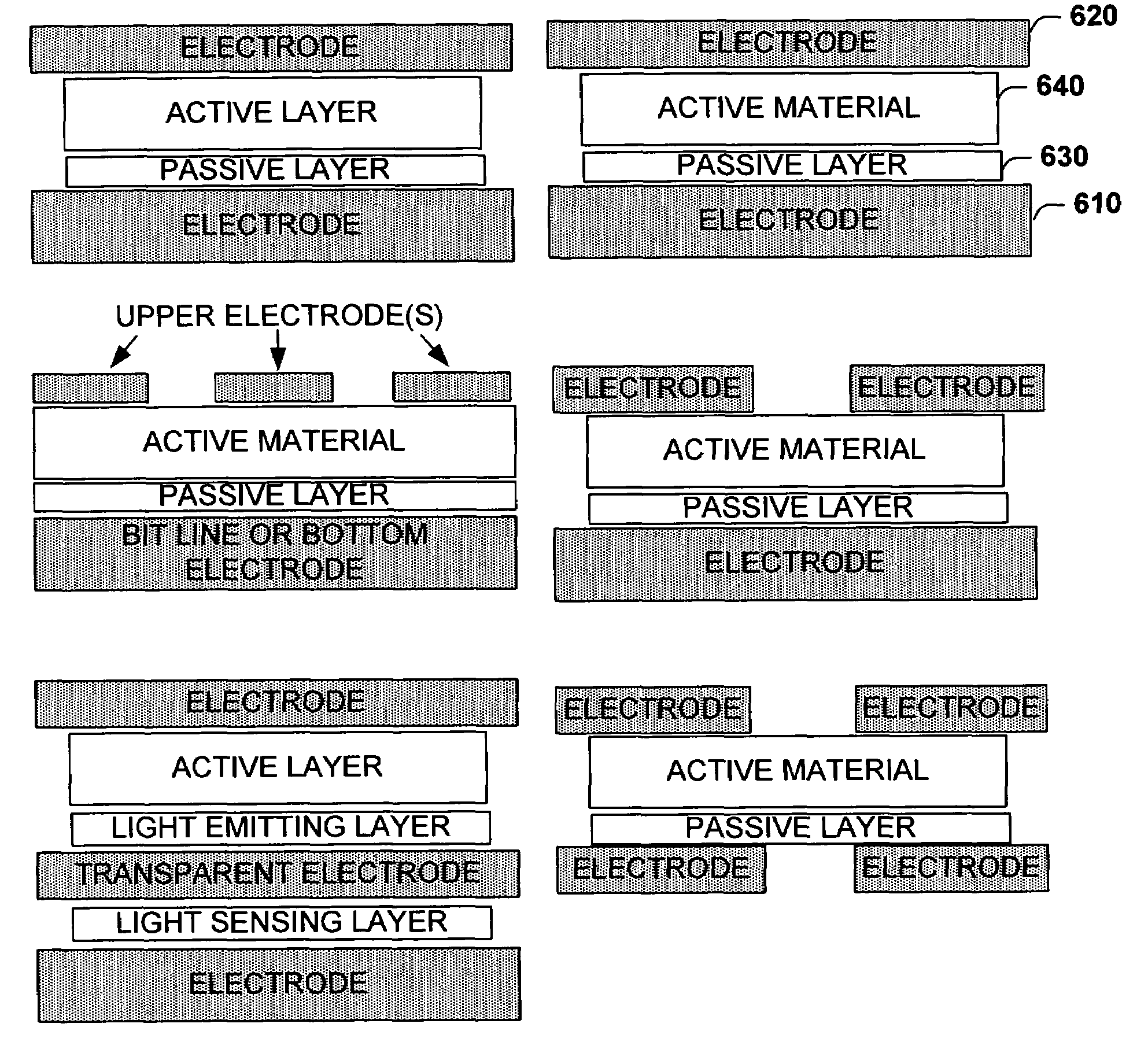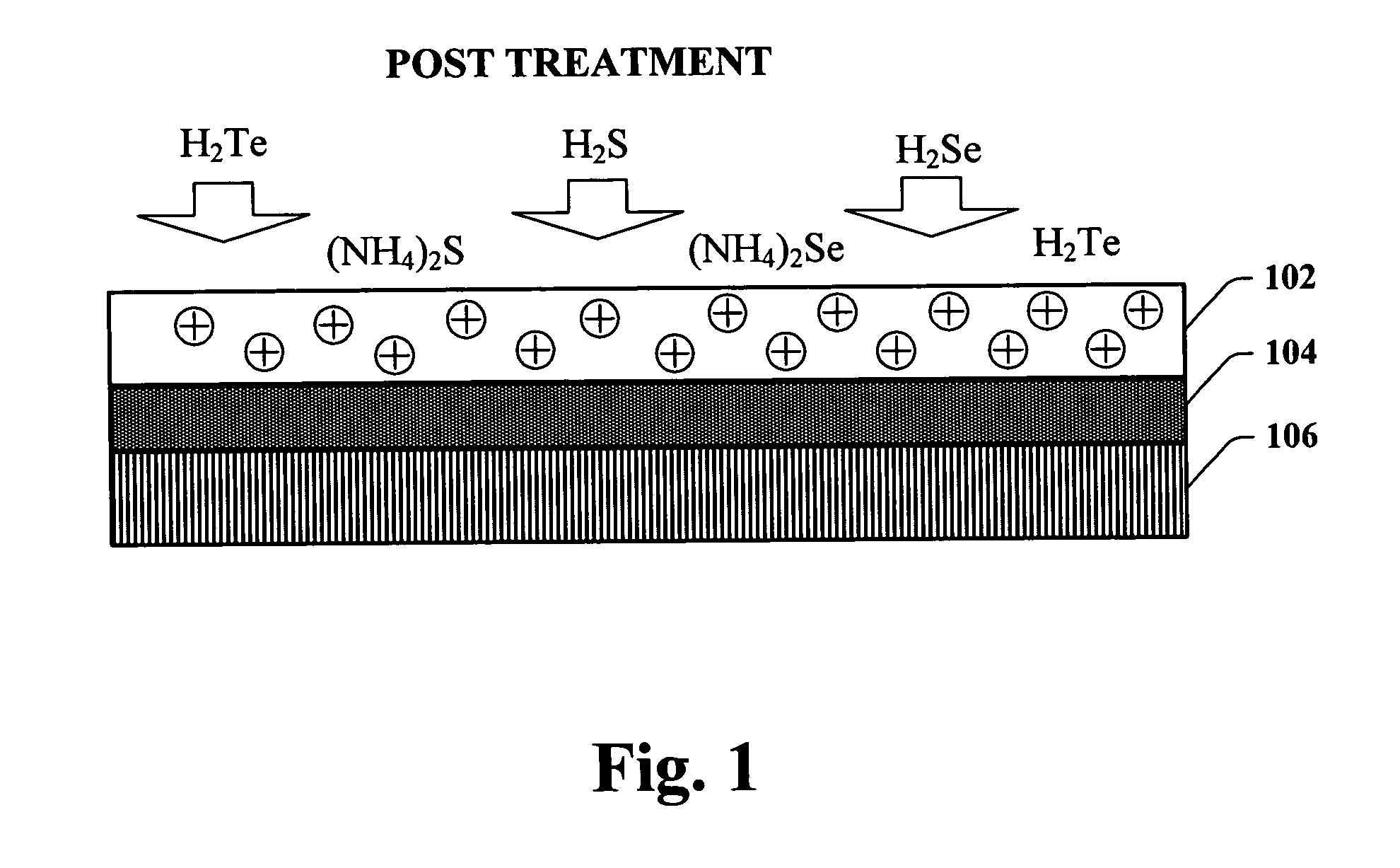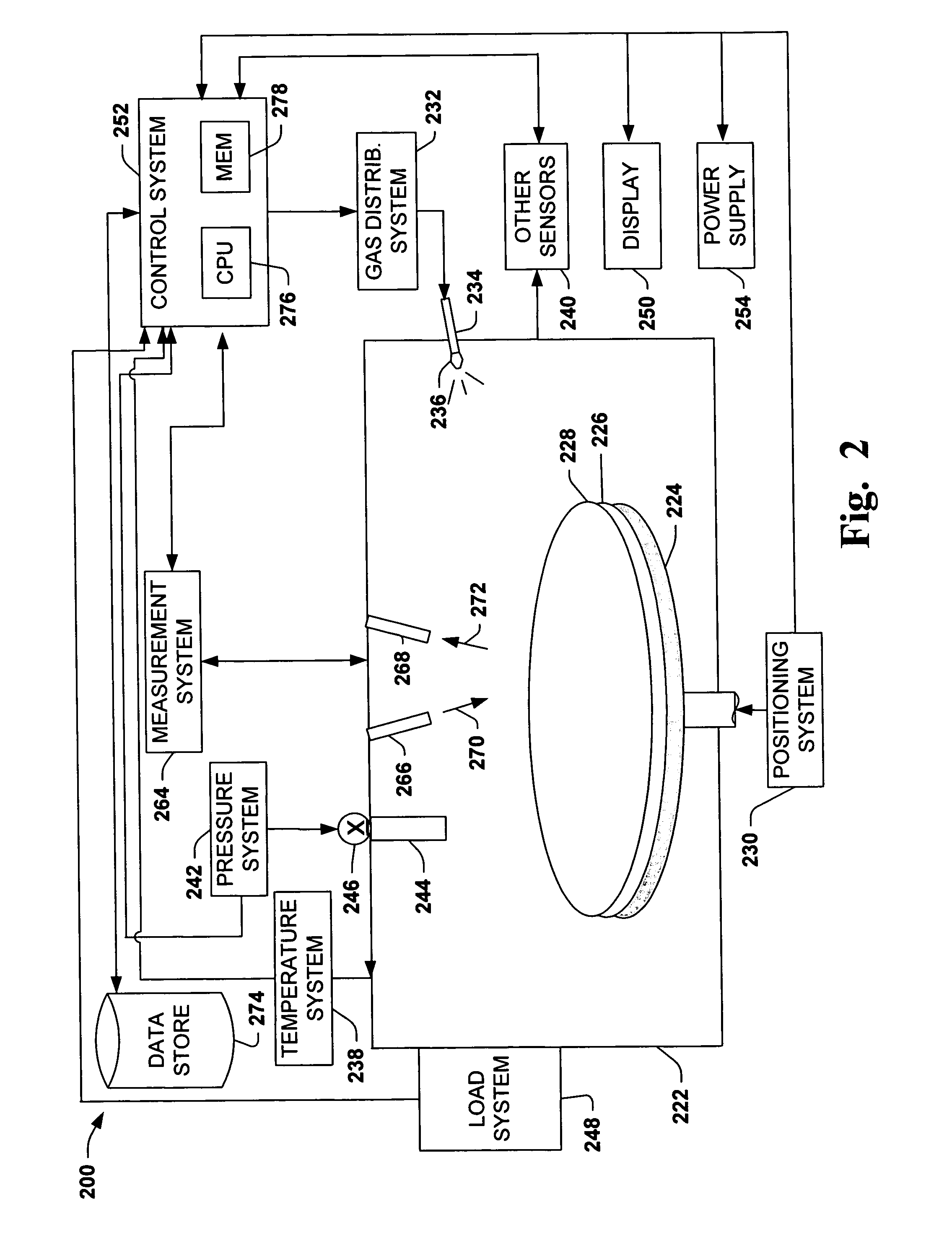Method to improve yield and simplify operation of polymer memory cells
a polymer memory cell and polymer technology, applied in the field of improving the yield and functionality of memory cells, can solve the problems of volatile memory devices generally losing their information, the volume, use and complexity of computers and electronic devices are continually increasing, and the initialization process can be shortened. the effect of reducing the need for initialization procedures, reducing the number of initialization procedures, and increasing mobility and availability
- Summary
- Abstract
- Description
- Claims
- Application Information
AI Technical Summary
Benefits of technology
Problems solved by technology
Method used
Image
Examples
Embodiment Construction
[0024]The present invention is now described with reference to the drawings, wherein like reference numerals are used to refer to like elements throughout. In the following description, for purposes of explanation, numerous specific details are set forth in order to provide a thorough understanding of the present invention. It may be evident, however, that the present invention may be practiced without these specific details. In other instances, well-known structures and devices are shown in block diagram form in order to facilitate describing the present invention.
[0025]The present invention provides for a post polymer growth treatment with compounds that can react with the active layer's metallic clusters to create metal ions (or charged metallic molecules) therein. Such compounds can for example include: ammonium sulfate (NH4)2S, ammonium selenide (NH4)2Se, hydrogen sulfide (H2S), hydrogen selenide (H2Se), hydrogen telluride (H2Te) and the like. The post treatment methodology of ...
PUM
 Login to View More
Login to View More Abstract
Description
Claims
Application Information
 Login to View More
Login to View More - R&D
- Intellectual Property
- Life Sciences
- Materials
- Tech Scout
- Unparalleled Data Quality
- Higher Quality Content
- 60% Fewer Hallucinations
Browse by: Latest US Patents, China's latest patents, Technical Efficacy Thesaurus, Application Domain, Technology Topic, Popular Technical Reports.
© 2025 PatSnap. All rights reserved.Legal|Privacy policy|Modern Slavery Act Transparency Statement|Sitemap|About US| Contact US: help@patsnap.com



